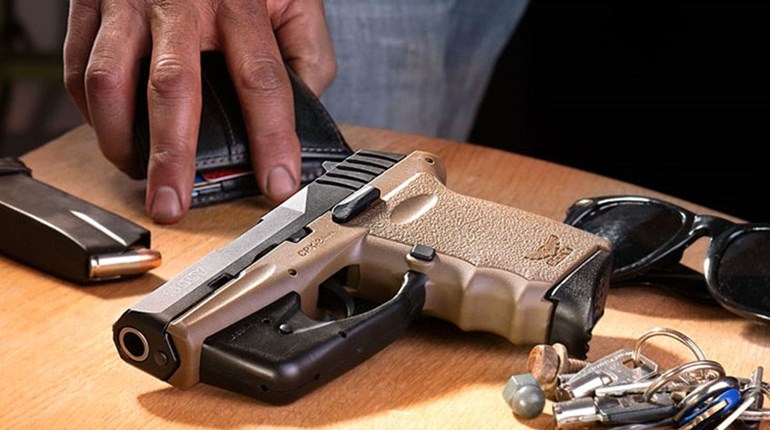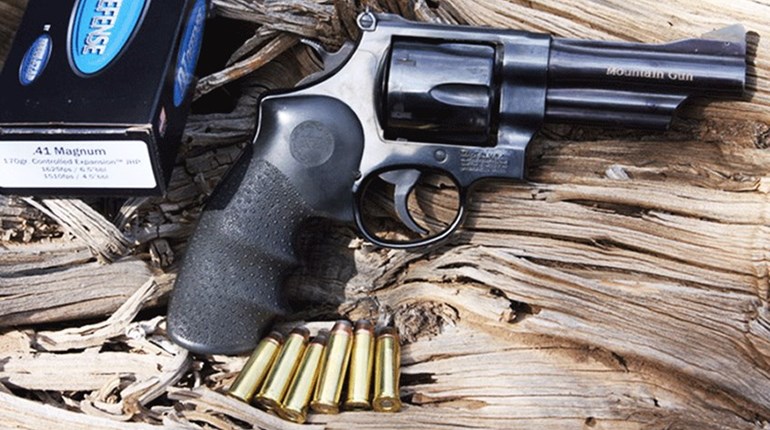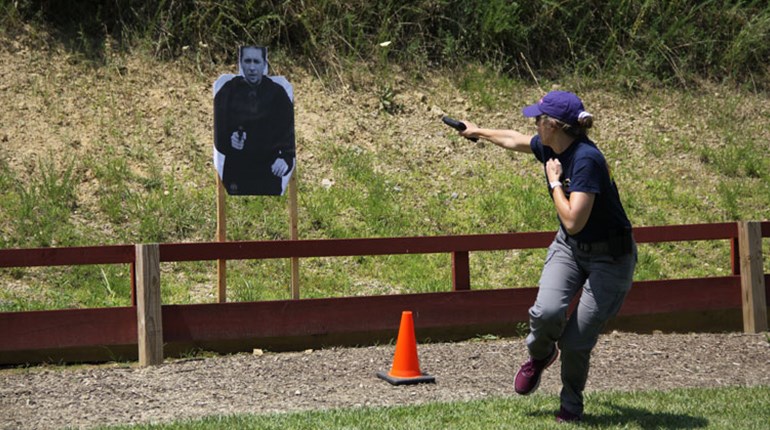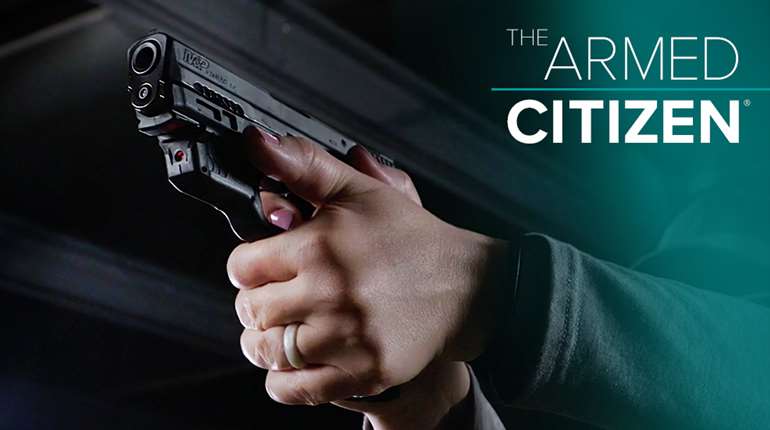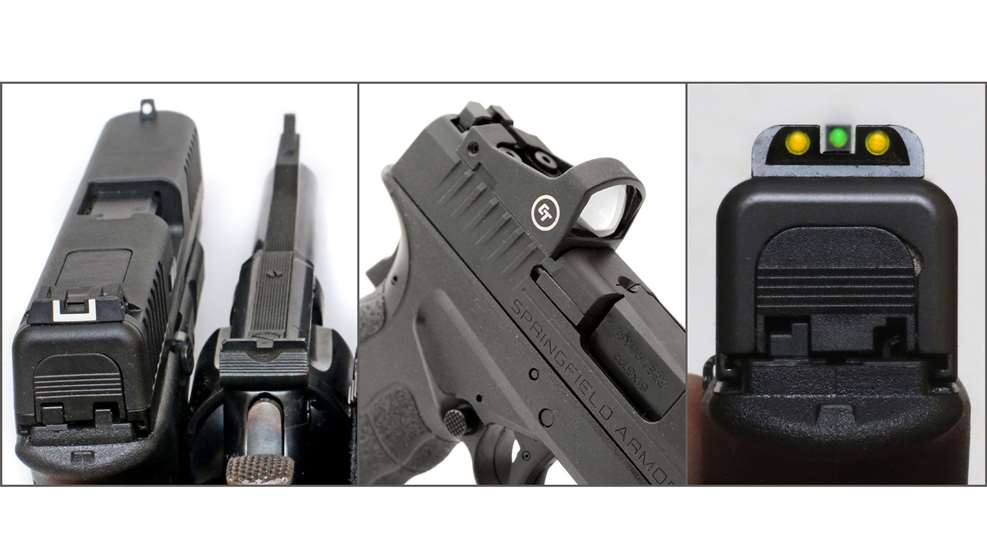
So, a sight is a sight, is a sight … right? Just line 'em up and pull the trigger. While the sights your gun came with might work just fine, it's possible a different kind of system could work better for you. Handgun sights come in many different configurations, but with a little bit of research you can elevate your shooting experience with the ideal sights for you.
Open Sights
Often referred to as “iron sights,” open sights are the standard type of sighting system that comes on a pistol from the factory. Most open sights consist of a rear notch and a front post. These sights may be further enhanced with dots or outlines that aid in alignment. On some pistols the rear sights are adjustable for windage (left and right), and elevation (up and down).
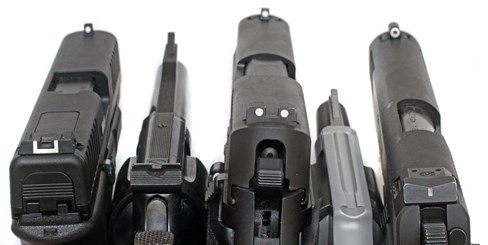
Open sights, or “iron sights” are usually what come standard on a handgun from the factory.

Open sights operate by nestling the front sight post evenly between the rear sight notch. These sights are further enhanced with outlines or dots to aid in alignment. **Note: not all of the sights pictured are properly aligned in order to better see their configuration.
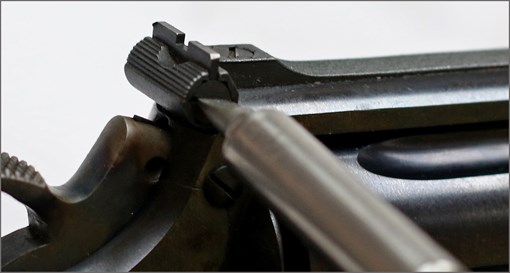
Some open sights can be adjusted for windage and elevation.
Fiber-Optic Sights
There are several enhancements for open sights. Your handgun may come from the factory with these enhancements or you can have a gunsmith add them later. Fiber-optic sights add pieces of fiber-optic material that collect available light, giving them an illumination. Fiber-optic sights appear brighter than iron sights and can be easier to see. They come in yellow, green, orange or red, colors that stand out, distinguishing the sights against the target. Fiber-optic sights are brightest in strong lighting conditions. A set of fiber-optic sights will run anywhere from $50-$100.
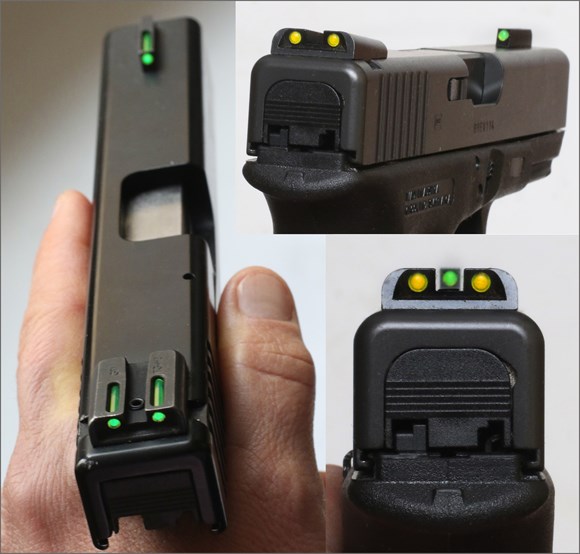
Fiber-optic sights appear to glow in bright sunlight. The fiber-optic material gathers light and aids in a sight’s visibility by using bright colors. Some fiber-optic sights are equipped with Tritium so they can also be seen in a low-light environment, such as these sights by Truglo.
Night Sights
Night sights have aiming points that glow in the dark, using self-illuminating tritium or a photoluminescent paint. Appearing white in daylight, they glow a greenish color when isolated in a dark environment. Many tritium sights are warranted to glow for about 12 years, after which they start to dim and should be replaced so that they remain effective. Expect to pay $100-$150 for a set. Note that there are some brands of sights that use a combination of both fiber optics and tritium that aid in seeing your sights in any lighting condition.
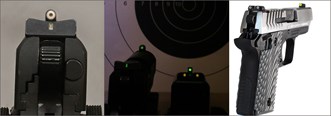
Night sights use tritium or photoluminescent paint that glows in low light environments. Night sights appear white in daylight and illuminate when isolated in the dark.
Micro Red-Dot Optics
Red dot optics have been around for a while, and although they got their start on long guns, more and more people are installing them on their pistols these days, and for good reason. These reflex sights provide a red aiming dot that can only be seen by the shooter when looking through the sight.
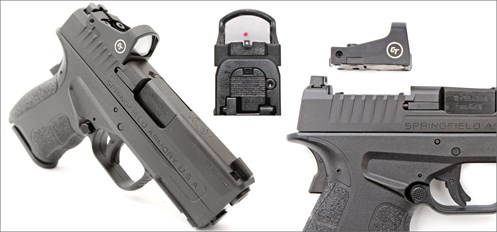
Micro red-dot sights are an optic that mounts on the top of a pistol. A red dot that is used as an aiming point is visible to the shooter through the optic. The use of a micro red dot requires that a handgun’s slide comes from the factory milled to mount an optic. The slides of some handguns can be modified by a gunsmith. Shown: Springfield XD-S OSP which comes from the factory with a Crimson Trace micro red dot mounted.
A handgun designed to accommodate a micro red-dot sight will have a mounting point milled into the rear part of its slide. If your handgun does not have a red-dot mounting point, it may be possible for a gunsmith to modify the slide to mount a sight. Micro red dots should co-witness with open sights, meaning you can see and use the open sights through the glass of the optic.
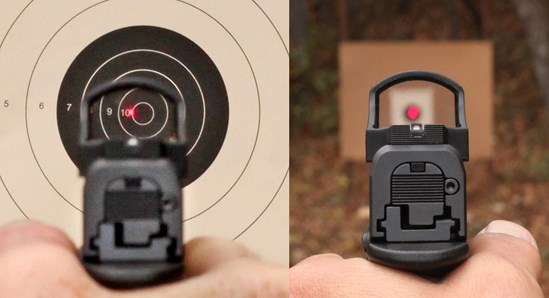
Micro red-dot sights provide an aiming dot when looking through the optic. The further you are from the target the more the dot covers the target. Depending on how a handgun is set up, you may be able to see and use your open sights through the optic. This is called “co-witnessing.”
Tiny and lightweight (they tend to weigh about an ounce), these optics have their advantages and disadvantages. They allow the shooter to focus on a single aiming point rather than the alignment of the front and rear sight. A micro red-dot optic might be helpful for someone who has trouble aligning open sights. Many shooters find that they are able to keep both eyes open while acquiring the target with a red dot sight, thus maintaining good situational awareness.
A downside to red dot sights is that your pistol may not be designed for a red dot and will need to be modified to accommodate one. Despite their low profile, these optics change the dimensions of the pistol and you may need to get a different holster. Micro red dots range from $150-$700. These optics are designed to operate for thousands of hours of usage, but they are powered by a battery, which adds another step in maintaining the readiness of your handgun.
Laser Sights
A laser sight projects a red or green beam which appears as a dot at your point of aim on the target. There are numerous different laser set-ups that mount them anywhere from within the grip panels, to the frame rail, to projecting from the pistol’s internal guide rod. A downside to laser sights is that objects (your finger, clothing, something in the foreground) can block the laser beam. Lasers usually have some type of a passive activation switch, meaning when you grip the handgun the laser is activated. Lasers that mount around the grip frame will increase the grip’s width minimally. Battery life for lasers usually lasts around two hours. Depending on how the laser mounts, you may still be able to use your same holster. The cost of laser sights can vary greatly due to type and manufacturer, ranging from $50-$400.
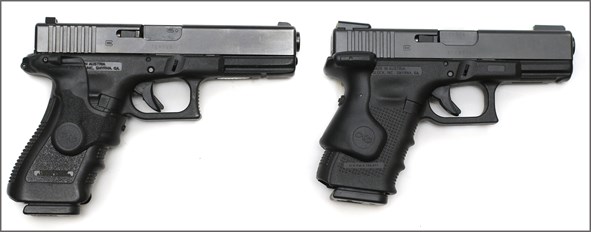
Laser sights can be mounted to a handgun in many different ways. Many lasers made by Crimson Trace replace the handgun’s grip. In the case of polymer-framed handguns, like these Glocks, the Crimson Trace laser mounts on the grip area of the frame. Pictured is a Crimson Trace LG-47 red laser on a Gen3 Glock 17 (left) and a Crimson Trace LG-639G green laser on a Gen4 Glock 19 (right).
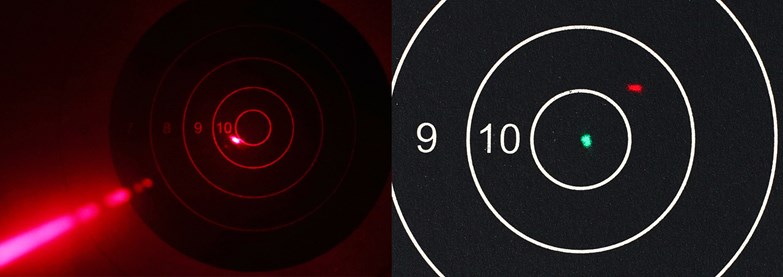
Laser sights project a laser beam and the dot is all that is visible when aligned with the target (in this image the beam is only visible with the aid of smoke). Lasers come in red or green colors, with green lasers being more visible in bright daylight (notice how the red laser dot fades when you squint at the target).
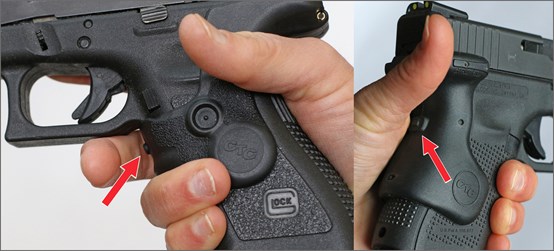
Many laser sights are activated by gripping the handgun. Crimson Trace laser sights use what the company calls “Instinctive Activation.” The Crimson Trace LG-47 (left) uses a front activation switch and the Crimson Trace LG-639G (right) uses a rear activation switch. A normal firing grip activates the laser beam.
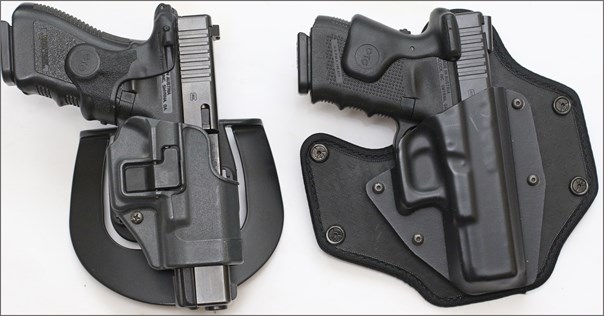
Most laser sights are compatible with holsters. For units that mount on the frame rail or around the trigger guard you will need a special holster to accommodate the laser. These two Crimson Trace lasers mount in the grip area and are compatible with these stock Blackhawk and Tactica holsters.
One benefit to laser/light combinations is that they aid in target identification as well as aiming. A laser/light combo provides a tactical light and laser in one unit that usually mounts on the frame rail of a handgun. Having a light attached to your handgun can help with quick target identification in low light situations. Depending on how a laser/light unit mounts, you may need a different holster setup to accommodate carrying the handgun.
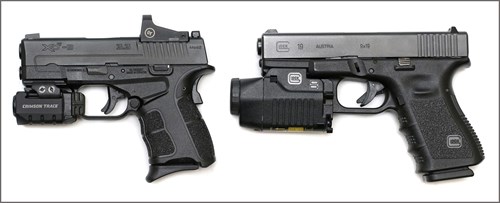
Laser sights are sometimes built in to tactical weapons lights, which mount on the frame rail of a handgun. The Crimson Trace CMR-205 Rail Master Pro combines a red laser with a 100 lumen tactical light (left). Its compact size pairs well with sub compact handguns such as this Springfield XD-S OSP. The Glock Tactical Light GTL-22 (right) combines a Xenon tactical light and red laser and is designed to mount on Glock handgun accessory rails.
A laser/light combo might not be something you want to add to your EDC gun, but could be an accessory you keep on your at-home handgun. They usually have a small switch to specify which option you want to use: light by itself, laser by itself or light and laser together. These tactical light and laser units can cost around $100-$350.
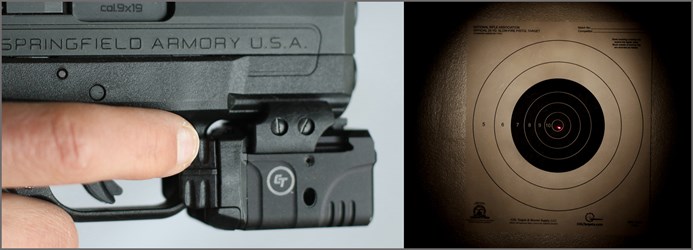
Laser and tactical light combos that mount to frame rails are usually actuated by pressing a lever or button with your trigger finger. These allow for positive target identification in low-light conditions, as well as laser aiming. This Crimson Trace CMR-205 Rail Master Pro allows you to choose to run just the laser, just the tactical light or both simultaneously.
So, which sights are best? The answer is different for everyone.
Even if your handgun is outfitted with only open sights, it's important to practice and train the fundamentals of good sight alignment and aiming with those. As your skills progress, you can always make enhancements to your sights. Visit your local gun shop to look at the different kind of sight options discussed in this article, and try them out on a range. How you are most often using your handgun will help you to determine which kind of sights you need. By developing your marksmanship fundamentals, you will have a better understanding of the sighting systems and you can nail down which system works best for you.













